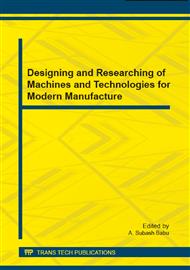[1]
E.E. Larrabee, Practical design of minimum Induced Loss Propellers. SAE Preprint 790585, (1979).
Google Scholar
[2]
R. Eppler, M. Hepperle, A procedure for propeller design by inverse methods. Proceedings of the International Conference on Inverse Design Concepts in Engineering Sciences (ICIDES), Austin TX, October 17-18, (1984).
Google Scholar
[3]
G. Romeo, I. F. Borrello, E. Cestino, ENFICA-FC: Environmental friendly inter-city aircraft and 2-seat air-craft powered by fuel cells electric propulsion, Airtech 2nd international conference. Supply on Wing, 24-25 October 2005, Frankfurt/Main, Germany.
Google Scholar
[4]
G. Romeo, I. Moraglio, C. Novarese, ENFICA-FC: Prelimi-nary survey & design of 2-seat aircraft powered by fuel cells electric propulsion. 7th AIAA Aviation Tech-nology Integration and Operation Conference (Atio), 18-20 September 2007, Belfast, Northern Ireland.
DOI: 10.2514/6.2007-7754
Google Scholar
[5]
G. Romeo, F. Borello, ENFICA-FC: Environmental friendly inter-city aircraft design and realization of 2-seater aircraft powered by fuel cells electric propulsion. XX AIDAA Congress, Milano, Italy, June 29- July 3, (2009).
DOI: 10.1109/esars.2012.6387492
Google Scholar
[6]
G. Romeo, E. Cestino, F. Borello, Engineering method for air-cooling design of two-seat propeller-driven aircraft powered by fuel cells, Journal of Aerospace Engineering. 1 (2011) 79-88.
DOI: 10.1061/(asce)as.1943-5525.0000055
Google Scholar
[7]
S.D. Angelo, F. Berardi, E. Minisci, Aerodynamic perfor-mances of propellers with parametric considerations on the optimal design, The Aeronautical journal. 106 (2002) 1060.
DOI: 10.1017/s0001924000096068
Google Scholar
[8]
C. Burger, R. Hartfield, Design, testing and optimization of a constant torque propeller, 25th AIAA Applied Aerodynamics Conference 25 - 28 Jun 2007, Miami, FL. AIAA-2007-3927.
DOI: 10.2514/6.2007-3927
Google Scholar


